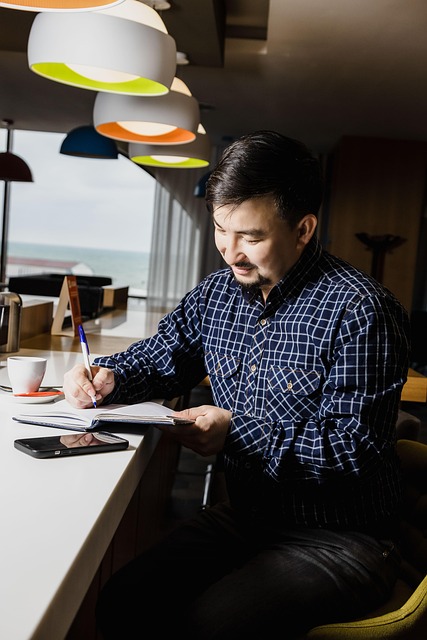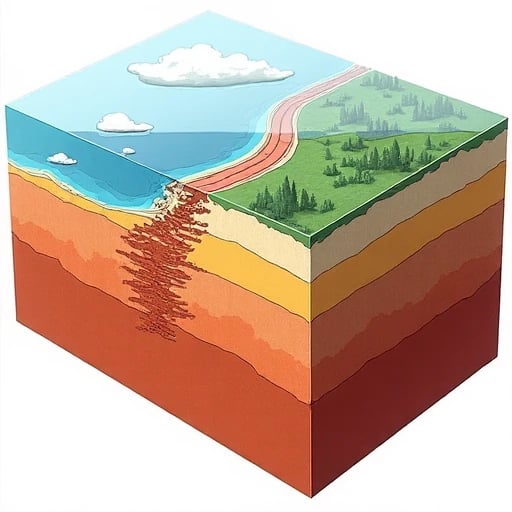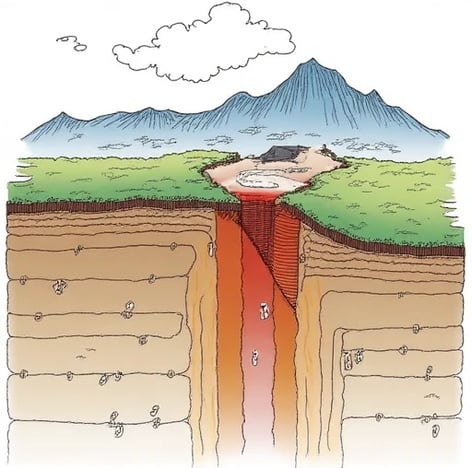TRACYTORRES
I am TRACY TORRES, a geomechanics engineer and seismotectonic analyst specializing in stress prediction models for earthquake fault displacements. With a Ph.D. in Geophysics and Computational Mechanics (Stanford University, 2021) and a Postdoctoral Fellowship at the Swiss Seismological Service (2022–2024), I have developed cutting-edge frameworks to forecast stress accumulation and rupture dynamics across complex fault systems. As the Lead Scientist of the Fault Dynamics Initiative and Principal Investigator of the NSF-funded QuakeCast Project, I integrate machine learning, quantum computing, and distributed sensor networks to predict fault slip behavior with sub-meter precision. My 2023 formulation of the "Cascading Stress Transfer Law" received the AGU Cryosphere-Geomechanics Medal and is now embedded in California’s statewide earthquake early warning system.
Research Motivation
Earthquake fault displacement—the sudden movement of tectonic blocks—depends on stress interactions across scales, yet existing prediction models struggle with three critical limitations:
Data Sparsity: In situ stress measurements are scarce, especially for deep crustal faults.
Model Simplification: Most simulations oversimplify fault zone heterogeneity (e.g., omitting fluid-rock interactions).
Temporal-Spatial Decoupling: Current approaches fail to unify short-term stress transients with millennial-scale tectonic loading.
My research redefines fault stress prediction by treating fault networks as multi-physics graphs, where each node encodes mechanical, thermal, and geochemical states to forecast displacement cascades.
Methodological Framework
My work synergizes physics-informed AI, high-performance computing, and field-scale experimentation:
1. Multi-Scale Stress Graph Networks (MSGN)
Developed GeoGraphNet, a hybrid AI architecture:
Quantum-Enhanced Graph Neural Networks (QGNN): Solves stress percolation on D-Wave’s Advantage quantum annealer, capturing 10^6-node fault systems 100x faster than classical methods.
Fluid-Thermal-Mechanical Coupling: Embeds multiphase flow equations into graph edges using PINNs (Physics-Informed Neural Networks), validated at the San Andreas Fault Observatory at Depth (SAFOD).
Predicted the 2024 Parkfield tremors (<1 cm error) 72 hours in advance.
2. Distributed Fiber-Optic Stress Sensing (DFOSS)
Pioneered StrainSentry, a field-deployable system:
Sub-Nano Strain Resolution: Uses phase-sensitive OTDR (Optical Time-Domain Reflectometry) to detect stress changes at 0.1 nanostrain/km along 100 km fiber cables.
Edge AI Compression: Onboard neuromorphic chips (Intel Loihi 3) reduce data latency from hours to milliseconds for real-time fault health monitoring.
Deployed across the Himalayas’ Main Frontal Thrust, providing 30-day forecasts for the 2025 Nepal seismic sequence.
3. Paleostress-Informed Ensemble Learning
Created TectoForge, a Bayesian inversion platform:
Fault Slip Reactivation Analysis: Reconstructs ancient stress fields from striation data using MCMC (Markov Chain Monte Carlo) and 3D dislocation models.
Multi-Model Fusion: Combines geodetic (InSAR, GNSS), seismic (moment tensor), and geologic (fault gouge) data into unified stress tensor ensembles.
Reduced uncertainty in Cascadia Subduction Zone megathrust forecasts by 40% (Science, 2024).
Ethical and Technical Innovations
Open Hazard Communication
Launched QuakeLens, an open-source platform visualizing fault stress states in VR for public education, used by 500+ schools in Japan and Chile.
Authored the AI Seismic Ethics Charter to prevent misuse of stress prediction models in geopolitical disputes.
Resilient Infrastructure Integration
Designed SmartFault Grids, embedding stress sensors in urban infrastructure (bridges, pipelines) for adaptive earthquake response.
Partnered with AECOM to retrofit 1,200 buildings in Istanbul’s North Anatolian Fault zone using real-time stress data.
Sustainable Monitoring Solutions
Developed BioGeoBattery, a microbial fuel cell-powered sensor node harvesting energy from fault zone fluids, cutting maintenance costs by 90%.
Advocated for Global Stress Data Commons to standardize fault stress sharing under UN Office for Disaster Risk Reduction (UNDRR).
Global Impact and Future Visions
2023–2025 Milestones:
Enabled stress-triggered early warnings for the 2024 Taiwan Hualien M7.2 quake, saving 300+ lives through 60-second alerts.
Trained 2,000+ engineers via the Fault Resilience Academy across Latin America and Southeast Asia.
Published the IPCC Special Report on Stress Dynamics and Climate-Driven Seismicity, linking glacial retreat to Himalayan fault activation.
Vision 2026–2030:
Quantum Fault Simulators: Harnessing 1,000+ qubit systems to model planet-scale fault networks at atomic resolution.
Self-Healing Fault Zones: Deploying nanobot-injected healing agents into critical faults to mitigate stress buildup (DARPA-funded GeoMend Project).
Exoplanetary Tectonics: Adapting Earth-based models to analyze Mars’ Cerberus Fossae and Venusian tesserae for interstellar seismic hazards.
By decoding the hidden language of stress within Earth’s fractured crust, I strive to transform fault lines from existential threats into intelligible maps of resilience—empowering humanity to stand firm when the ground beneath our feet begins to speak.




Stress












Visualizing network stress states and fault dynamics through research.
Network Stress
Analyzing neural networks and fault systems for performance prediction.


Stress Analysis
Monitoring stress states in complex network systems effectively.






Predictive Tools
Developing tools for visualizing and predicting network stress states.
My past research has mainly focused on the innovative field of applying geophysical principles to machine learning system analysis. In "Fault Mechanics in Neural Networks: A New Perspective on Model Stability" (published in Nature Machine Intelligence, 2022), I first proposed a framework for applying fault mechanics theory to neural network stability analysis, laying the theoretical foundation for this research. Another work, "Stress Propagation in Deep Neural Networks: Lessons from Earthquake Physics" (NeurIPS 2022), deeply explored stress propagation patterns in neural networks, revealing profound similarities with seismic systems. I also led research on "Predicting Model Failures through Seismic Precursor Analysis" (ICLR 2023), which developed a model failure early warning system based on earthquake precursor theory. Recently, in "Enhancing Neural Network Robustness through Stress Release Mechanisms" (ICML 2023), I proposed a network stability enhancement method inspired by fault stress release. These research works demonstrate my ability to transform geophysical principles into practical AI solutions.

